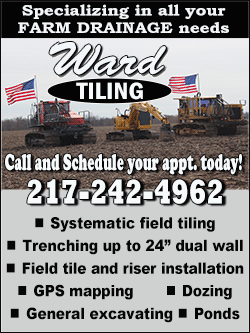|
 As part of that deal, Iran and the powers agreed that United
Nations inspectors would have "enhanced" access to remaining nuclear
activity in Iran, where they already monitor key sites. As part of that deal, Iran and the powers agreed that United
Nations inspectors would have "enhanced" access to remaining nuclear
activity in Iran, where they already monitor key sites.
But details on exactly what kind of access the inspectors will have
were left for the final stage of talks, posing a major challenge for
negotiators on a complex and logistically challenging issue that is
highly delicate for Iran's leaders.
Securing proper inspections is crucial for the United States and
other Western powers to ensure a final deal, due by June 30, is
effective and to persuade a skeptical U.S. Congress and Israel to
accept the agreement. Iran says its nuclear program is peaceful, but
it has never welcomed intrusive inspections and has in the past kept
some nuclear sites secret.
Sharply differing interpretations have emerged on what was covered
by last week's framework agreement - a sign of what diplomats and
nuclear experts say will be tough talks ahead.
Iranian Supreme Leader Ayatollah Ali Khamenei, who has the final say
for Iran on the deal, on Thursday ruled out any "extraordinary
supervision measures" over nuclear activities and said military
sites could not be inspected.

That appeared to contradict a U.S. "fact sheet" issued after last
week's marathon talks in Switzerland which said the U.N.
International Atomic Energy Agency (IAEA) would have "regular access
to all Iran's nuclear activities" and to the supply chain that
supports it, as well as a joint Iranian-European Union statement
that said the IAEA would have expanded access in Iran.
Aside from the question of Iranian consent, the logistical
requirements for increased monitoring of Iranian sites would be
daunting. It would involve more cameras, on-site inspections,
satellite surveillance and other methods and might require the IAEA
to assign more people and resources to its Iran team.
David Albright, president of the Institute for Science and
International Security, said it was crucial to come up with a
mechanism for "anytime, anywhere" inspections that go beyond the
IAEA's own special arrangements for short-notice inspections, known
as the Additional Protocol.
The Additional Protocol was created in the 1990s, after the
discovery of Iraq's secret nuclear weapons program and revelations
that North Korea and Romania had separated plutonium, as a means of
smoking out covert arms-related activities.
"It’s extremely difficult for Iran," said Albright, himself a former
U.N. weapons inspector. "They don’t want it. They want to keep
smuggling (nuclear-related dual-use items). They’re buying a lot of
things, and they’re not going to want to stop."
"BIG FIGHTS" AHEAD
Last week's framework accord between Iran, the United States,
Britain, France, Germany, Russia and China cleared the way for talks
on a final settlement by a June 30 deadline. The aim is to block an
Iranian path to a nuclear bomb in return for lifting sanctions on
Tehran.

The framework would require Iran to mothball most of its installed
enrichment centrifuges and curtail uranium enrichment and other
sensitive work for at least a decade. The plan calls for
IAEA-monitored storage by Iran of thousands of centrifuges and other
infrastructure.
Among the splits that have already emerged in the Iranian and
Western interpretations of the deal are timing of sanctions relief
and the removal of U.N. sanctions, as well as monitoring.
[to top of second column] |

"I believe monitoring and inspections may prove to be the most
difficult nut to crack and I wouldn't be surprised if Iran and the
P5+1 (six powers) have some big fights about it," a senior
diplomatic source told Reuters condition of anonymity.
The interim deal makes clear that broader inspections will be
mandatory for Iran. The joint EU-Iranian statement said that the
IAEA "will have enhanced access through agreed procedures, including
to clarify past and present issues."
Iran signed the Additional Protocol in 2003, a year after the
existence of its Natanz enrichment site and Arak heavy-water
production facility was revealed. Tehran began voluntarily
implementing the protocol but never ratified it. It eventually
stopped implementing it.
U.S. State Department spokeswoman Marie Harf told reporters in
Washington on Wednesday that Iran had agreed that it would resume
implementation of the Additional Protocol and would submit it for
ratification.
But Olli Heinonen, the IAEA's former chief nuclear inspector who is
now at Harvard University, said Additional Protocol inspections
would likely not be enough for proper monitoring.
The Additional Protocol has limitations, experts say, such as not
covering research by Iran that the IAEA is investigating and which
Western countries believe was linked to weaponization.
Heinonen said there would have to be a new comprehensive Iranian
declaration about its nuclear program that also includes information
about Iranian cooperation with foreign states.
"You need some provision about nuclear cooperation with other
countries given the stories about cooperation with North Korea,"
Heinonen said.

Jacqueline Shire, a non-proliferation expert and former member of
the U.N. Security Council's Panel of Experts on Iran, said resolving
questions about the so-called "possible military dimensions" of
Iran's past nuclear activities was crucial but extremely difficult.
"Iran will have to engage with the IAEA on this in a way it has not,
up to this point, been willing to," she said.
Heinonen, Albright and Shire said that failure to address the
possible military dimensions could undermine confidence in any
monitoring and inspection regime.
"If you leave PMD unresolved, then there could be many unknowns,"
Heinonen said.
(This version of the story has been refiled to clarify editorial
insertion in David Albright quote to "nuclear-related dual-use
items," not "nuclear materials", in 11th paragraph)
(Editing by Stuart Grudgings)
[© 2015 Thomson Reuters. All rights
reserved.]
Copyright 2015 Reuters. All rights reserved. This material may not be published,
broadcast, rewritten or redistributed. |